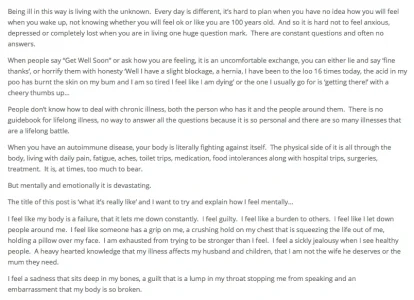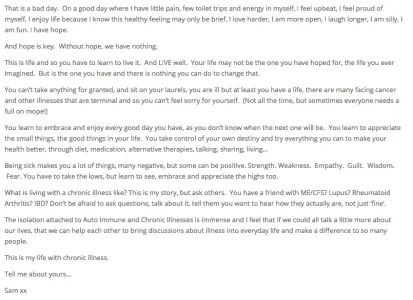"Who in the World am I?" asked Alice (in Wonderland).
"I'm sure I'm not Ada," she said, "for her hair goes in such long ringlets, and mine doesn't go in ringlets at all; and I'm sure I can't be Mabel, for I know all sorts of things, and she, oh, she knows such a very little."
"Besides, she's she, and I'm I, and - oh dear, how puzzling it all is!"
Alas!
The mass of accumulating evidence calls our individual separateness into question.
Space and time aren't the walls we think.
Experiments suggest the distinction between past and future - and between here and there - are an illusion.
This won't surprise those who, contemplating the works of men such as
Plato,
Socrates, and
Kant, and of
Buddha and other great spiritual teachers, kept wondering about
the relationship between the universe and the mind of man.
Indeed, even
Einstein told us that space and time only exist relative to the observer.
Of course, there are nearly seven billion observers on the planet (not to mention the other eight million eukaryotic species).
Scientists have traced all of this life back to some single-celled organism in
the Archean sea.
Indeed, even the matter and energy that makes us up can be traced back in space and time to a singularity.
Clearly, we're all interrelated, but are we part of a single individuality?
Perhaps we're like the cells in our body, constantly dying and being replaced, part of a complex entity greater than ourselves.
When you think of a living organism, you think of how its parts operate as a unified whole, like the workings of a fine watch.
For instance, the cells in leaves produce food for a plant, converting sunlight into chemical energy that it can use as food.
The cells in its stems and branches transport food and water from the leaves and roots to the whole organism.
Of course, instead of branches, we vertebrates have bones for support, and muscles that give us the ability to locomote and hunt for food.
This dynamic interrelationship occurs between species as well, not only in our gut but on a planet-wide scale.
We oxygen-breathing life-forms inhale oxygen and then exhale carbon dioxide; plants then take in the CO
2 and use it in their photosynthesis process and in turn give off or "exhale" oxygen.
But there's more to it than that.
We animals interpret the world using space and time - "sensitive concepts," which,
according to biocentrism, are forms in the mind, not hard, external realities.
Our individual separateness in space and time (as, for instance, you and I, or Alice, Ada and Mabel) is, in a sense, illusory.
Life is a complex play of cells, some around when you're young, some around when you're old, but they are all, regardless of species, ephemeral forms of an entity that transcends the walls of space and time.
"I would say," said Loren Eiseley, the great anthropologist, "that if 'dead' matter has reared up this curious landscape of fiddling crickets, song sparrows, and wondering men, it must be plain even to the most devoted materialist that the matter of which he speaks contains amazing, if not dreadful powers, and may not impossibly be, as Hardy has suggested, 'but one mask of many worn by the Great Face behind.'"
At first glance, it seems bizarre that a frog in the rain forest or a dolphin in the ocean should be directly connected to us.
But the double-slit experiment - as well as others - have repeatedly shown that a single particle can be in more than one place at the same time.
See the loon in the pond or the dandelion in the field.
How deceptive is the space that separates them and makes them solitary.
They're the subjects of the same reality that interested
John Bell, who proposed the experiment that answered the question of whether what happens locally is affected by nonlocal events.
Experiments from 1997 to 2007 have consistently shown that this is indeed the case.
Physicist
Nicolas Gisin sent entangled particles zooming along optical fibers until they were seven miles apart.
But whatever action they took, the communication between them happened instantaneously.
Today no one doubts the connectedness between bits of light or matter, or even entire clusters of atoms.
They're intimately linked in a manner suggesting there's no space between them, and no time influencing their behavior.
In fact, just this month a team of researchers published a paper in the prestigious journal Nature (Yin et al, 488, 185, 2012) extending this distance to unprecedented lengths - they achieved
quantum teleportation across Qinghai Lake in China, a distance of 97 kilometers, roughly equivalent to the distance between New York City and Philadelphia.
In the same way, there is a part of us that's connected to each other.
It's the part that experiences consciousness, not in our external embodiments but in our inner being.
And although we identify ourselves with our thoughts and affections, it's an essential feature of reality that we experience the world piece by piece.
As parts of such a whole we are all one.
"Non-separability," said physicist Bernard d'Espagnat, "is now one of the most certain general concepts in physics."
Heinz Pagels, the esteemed theoretical physicist, once stated:
"If you deny the objectivity of the world, unless you observe it and are conscious of it (as most physicists have), then you end up with solipsism - the belief that your consciousness is the only one."
Pagels' conclusion is right, except it's not your consciousness that is the only one, it's ours.
According to
biocentrism, our individual separateness may be
an illusion.
Remember the old Hindu poem:
"Know in thyself and All one self-same soul; banish the dream that sunders part from whole."
That consciousness which was behind the youth you once were, may also be behind the mind of every animal and person existing in space and time.
"There are," wrote Eiseley "very few youths today who will pause, coming from a biology class, to finger a yellow flower or poke in friendly fashion at a sunning turtle on the edge of the campus pond, and who are capable of saying to themselves, 'We are all one - all melted together.'"
There is more to life than dreamed of in our science and religions.
John Haldane, British-born geneticist and evolutionary biologist, once said,
"The universe is not only queerer than we suppose, but queerer than we can suppose."
Biocentrism suggests space and time aren't the only tools that can be used to construct reality.
Although our destiny is to live and die in the everyday world of up and down, these algorithms could be changed so that instead of time being linear, it was three-dimensional-like space.
We'd be able to walk through time just like we walk through space.
Life would be able to escape from its corporeal cage.
Indeed, our destiny likely lies in realities that exist outside of the known universe.
So
say goodbye to death, and fasten your seatbelt for a mind-blowing ride through space and time…
and beyond...
















